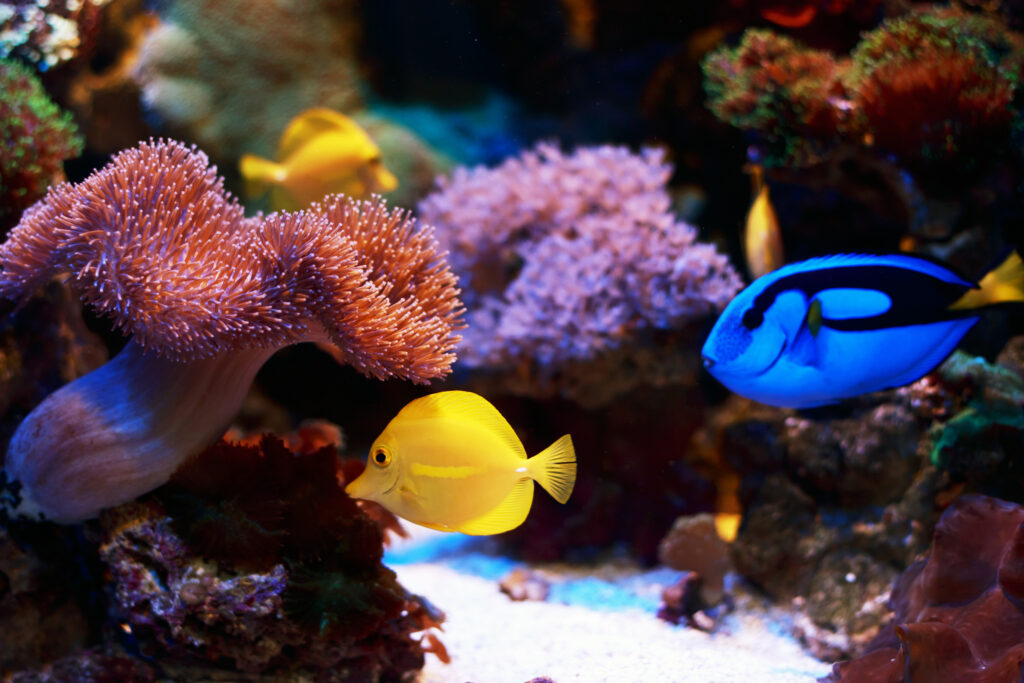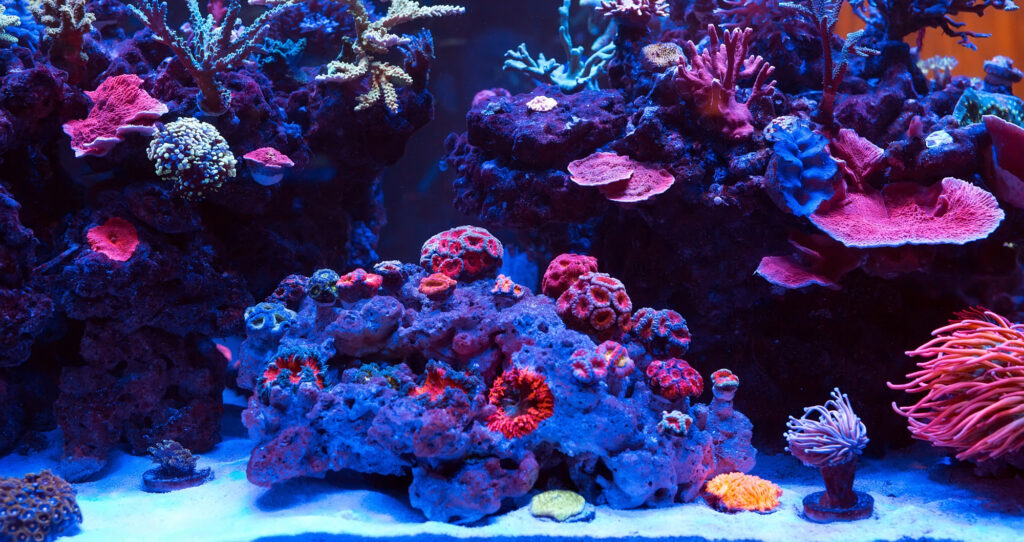
By: Kaelyn Lacefield
Maintaining a vibrant and healthy coral reef tank can be an enriching experience. Still, knowledge and diligence are required to ensure your coral thrives. Here’s a comprehensive guide to help you care for your coral at home, covering feeding, water quality, movement, lighting, and other essential maintenance tips.
Feeding Your Coral
Corals are mixotrophic, producing food through photosynthesis and consuming other organisms. Here’s what you need to know about feeding them:
- Photosynthesis: Corals house zooxanthellae, symbiotic algae that produce food using sunlight. Ensure your coral receives adequate light to facilitate this process.
- Dietary Needs: Corals need additional nutrients like proteins, lipids, and carbohydrates to grow. They obtain these by absorbing foods such as zooplankton, phytoplankton, floating plankton, and bacterioplankton.
- Species-Specific Diets: Research the specific dietary needs of your coral species. Some corals can consume bits of food meant for aquarium fish. In contrast, others may need specially formulated coral foods like marine snow, rotifer cultures, and phytoplankton.
- DIY Coral Food: You can create homemade coral food by blending shrimp, clams, krill, commercial foods, and fresh vegetables into a puree. This makes it easier for certain corals to absorb nutrients.
Maintaining Water Quality
Water quality is crucial for coral health. The following parameters should be regularly monitored and maintained:
- Calcium: 400 to 450 ppm
- Magnesium: 1200 to 1400 ppm
- Alkalinity: About 2.1 to 2.5 meq/L
- Specific Gravity: 1.023 to 1.025
- Temperature: 76 – 82 degrees Fahrenheit
- Ammonia, Nitrite, Nitrate, and Phosphate: 0 ppm
Regular water testing will help you keep these parameters in check. If levels are off, take immediate action to adjust them.
Ensuring Proper Water Movement
Water movement is essential for coral health as it helps bring food to them and clears away mucus and sediment. Here’s how to ensure adequate water movement:
- Flow Rate: Aim for a flow rate of 20 to 30 times the tank volume per hour.
- Powerheads: Position powerheads or circulation pumps to create turbulent water conditions. This can be achieved by aiming them to flow in different directions or collide with each other.
- Wave Makers: Consider using wave-making devices that create circular or wave-like water motion.
Providing Adequate Lighting
Lighting is critical for coral, particularly for those relying heavily on photosynthesis. The lighting requirements vary by coral type:
- Soft Corals: They need less light than hard corals.
- Hard Corals: Require intense lighting to thrive.
Without proper lighting, corals can suffer from bleaching and color loss. Be mindful of the lighting costs and the potential need for cooling equipment to manage increased tank temperatures.

Additional Maintenance Tips
- Tank Size: Corals grow best in larger reef tanks, although they can be kept in smaller aquariums.
- Safety Gear: Wear eye goggles, face masks, and gloves when handling corals to protect yourself from their toxins.
- Carbon Filtration: Use carbon in your filtration system to reduce toxins in the water.
- Soft Corals for Beginners: If you’re new to reef keeping, start with soft corals, as they are easier to care for than hard corals.
- Coral Compatibility: Be cautious when mixing different coral species. Some can be aggressive and compete for territory.
Caring for coral in a home aquarium requires attention to detail and a commitment to maintaining optimal conditions. By ensuring proper feeding, water quality, movement, and lighting, along with following additional maintenance tips, you can create a thriving environment for your coral. For more personalized advice or specific questions, contact us at J&M Aquatics. We’re here to help you succeed in your reef-keeping journey!
